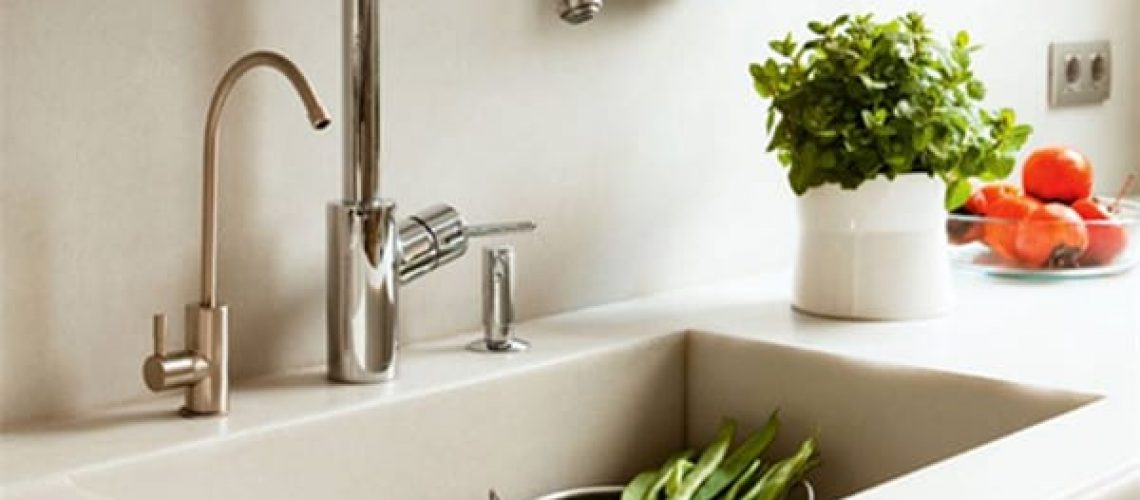những gì là vật liệu tốt nhất cho bồn rửa nhà bếp? Có những hình dạng nào để lựa chọn? Đặt bồn rửa ở đâu tốt nhất? Bạn có tất cả các câu trả lời ở đây.
1.BỒN THÉP KHÔNG GỈ
Điều đầu tiên cần cân nhắc khi chọn bồn rửa là kiểu dáng. Thép màu là vật liệu được sử dụng rộng rãi nhất trong sản xuất do tính năng tuyệt vời về khả năng chống chịu, độ bền, vệ sinh và dễ làm sạch. Chúng có sẵn ở hoàn thiện được đánh bóng hoặc mờ, cả hai đều được lắp đặt dưới mặt bàn và mặt phẳng. Đẹp mắt nhất là những thứ tạo thành một bề mặt liên tục với bàn làm việc hoặc loại máng như thế này.
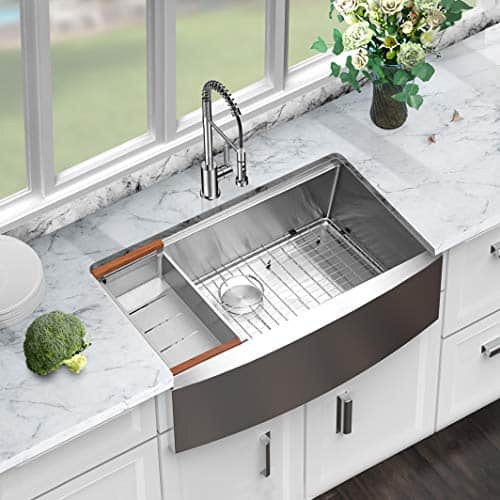
2.BỒN ĐÁ GRANITE COMPOSITE
Chúng rất tiện lợi vì không cần phải làm sạch liên tục để loại bỏ cặn vôi. Ngoài ra, chúng còn có khả năng được chế tạo trên cùng một mặt bàn, loại bỏ các mối nối khó chịu: Đá granite tổng hợp là một thành phần có độ bền cao bao gồm 80% đá granit tự nhiên, kết hợp với nhựa acrylic mang lại cho nó kết cấu tương tự như đá nhưng khi chạm vào sẽ mượt. Nó có sẵn trong rất nhiều màu sắc khác nhau.
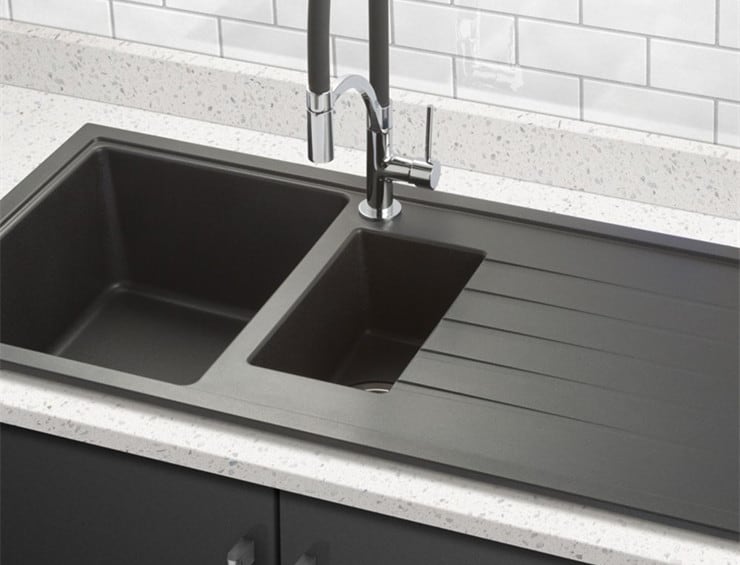
3.BỒN SỨ
Bồn rửa bằng sứ kiểu Anh là một kiểu dáng cổ điển rất thời trang. Chúng là những món đồ nhỏ gọn có mặt trước lộ ra ngoài mang lại vẻ trang nhã cho nhà bếp, dành cho cả những người có gu thẩm mỹ hiện đại và thành thị cũng như những phong cách cổ điển nhất.
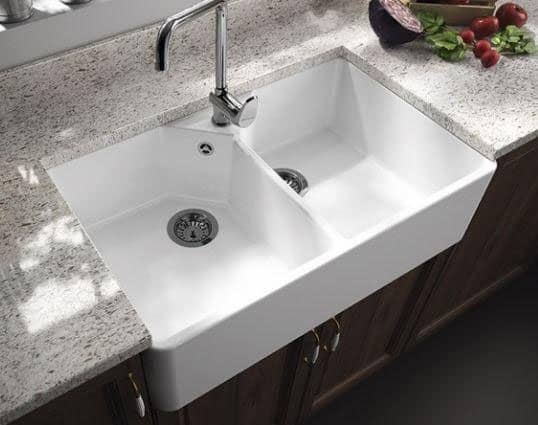
4.BỒN ĐÁ TỰ NHIÊN
Các mô hình phổ biến nhất trong danh mục này được làm bằng đá granit hoặc đá cẩm thạch nguyên khối. Độ cứng của nó thật phi thường, vẻ đẹp của nó là không thể chối cãi, nhưng phải đặc biệt cẩn thận để giữ gìn nó tốt; vì nó là vật liệu tự nhiên nên nó có thể bị mòn khi sử dụng.

5.Đá cẩm thạch nhân tạo
Giống như các mẫu tổng hợp, được làm từ nhựa có chất độn khoáng như thạch anh, bồn rửa bằng đá cẩm thạch có thể được sản xuất nguyên khối cạnh mặt bàn, không có khớp nối. Loại mảnh này cũng có thể được lắp đặt trên mặt bàn mà chúng ta sẽ thấy ở phần sau. Tĩnh mạch của nó là duy nhất.

6.BÁT ĐƠN HAY BÁ ĐÔI?
Mặc dù bát đôi vẫn là phổ biến nhất, nên lựa chọn tùy theo mục đích sử dụng và không gian sẵn có, vì chúng có nhiều kích cỡ và hình dạng khác nhau. các bồn rửa bát đơn thích hợp cho những căn bếp nhỏ có máy rửa chén.
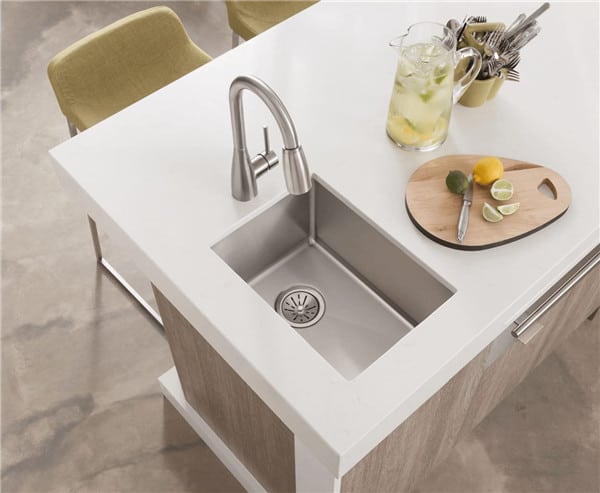
7.BỒN THÉP KHÔNG GỈ TRÒN ĐƠN
Nó có thể là giải pháp cho căn bếp nhỏ. Hình dạng tròn của nó tận dụng tốt bề mặt mà không chiếm nhiều không gian. Nếu bạn kết hợp nó với vòi có vòi có thể mở rộng, bạn sẽ mở rộng khả năng của nó.
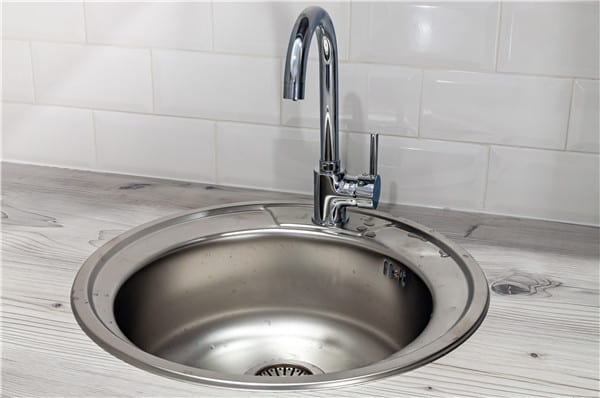
8.BÁT RỬA MỘT NỬA
Ở những gia đình có máy rửa bát, nơi dung tích bồn rửa không quá quan trọng, bạn có thể lựa chọn mẫu máy một bát rưỡi. Chậu thông thường kết hợp với chậu nhỏ hơn thường được trang bị thêm các phụ kiện như thớt thoát nước hoặc thớt. Những phụ kiện đó vừa vặn như một chiếc nắp được sử dụng làm bề mặt làm việc.
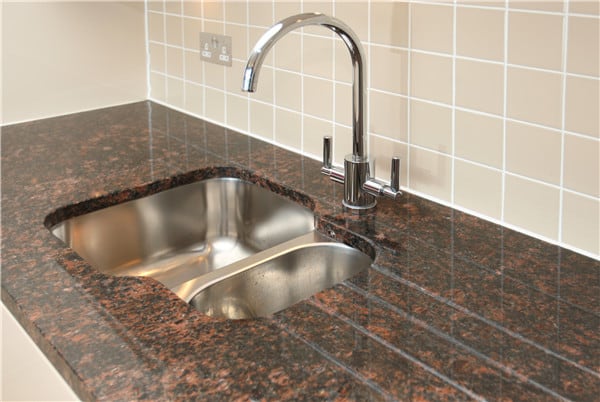
9.BỒN CHẢI ĐÔI
Đây là tùy chọn phổ biến nhất do chức năng của nó. Lý tưởng cho đồ nội thất có chiều sâu tiêu chuẩn 90 cm, chúng có chiều dài khoảng 75 cm x rộng 40 cm. Thiết kế của nó cho phép rửa trong một chậu và rửa trong chậu kia.
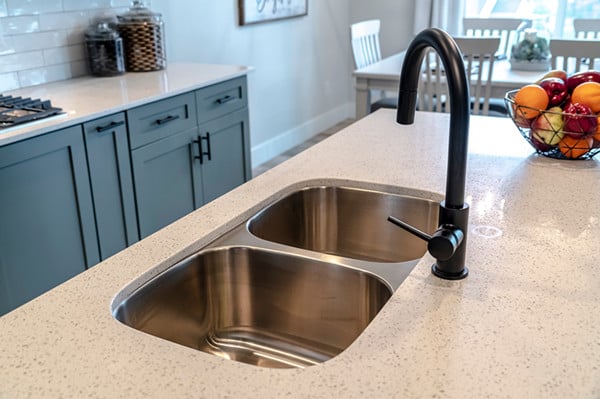
10. TÀU CHÌM
Tùy chọn đầu tiên minh họa điều này bồn rửa gắn trên bằng đá granite composite trên mặt bàn bằng gỗ, cho thấy toàn bộ thân bồn rửa. Kiểu vị trí này được khuyên dùng khi bồn rửa là duy nhất và bạn muốn làm nổi bật nó.
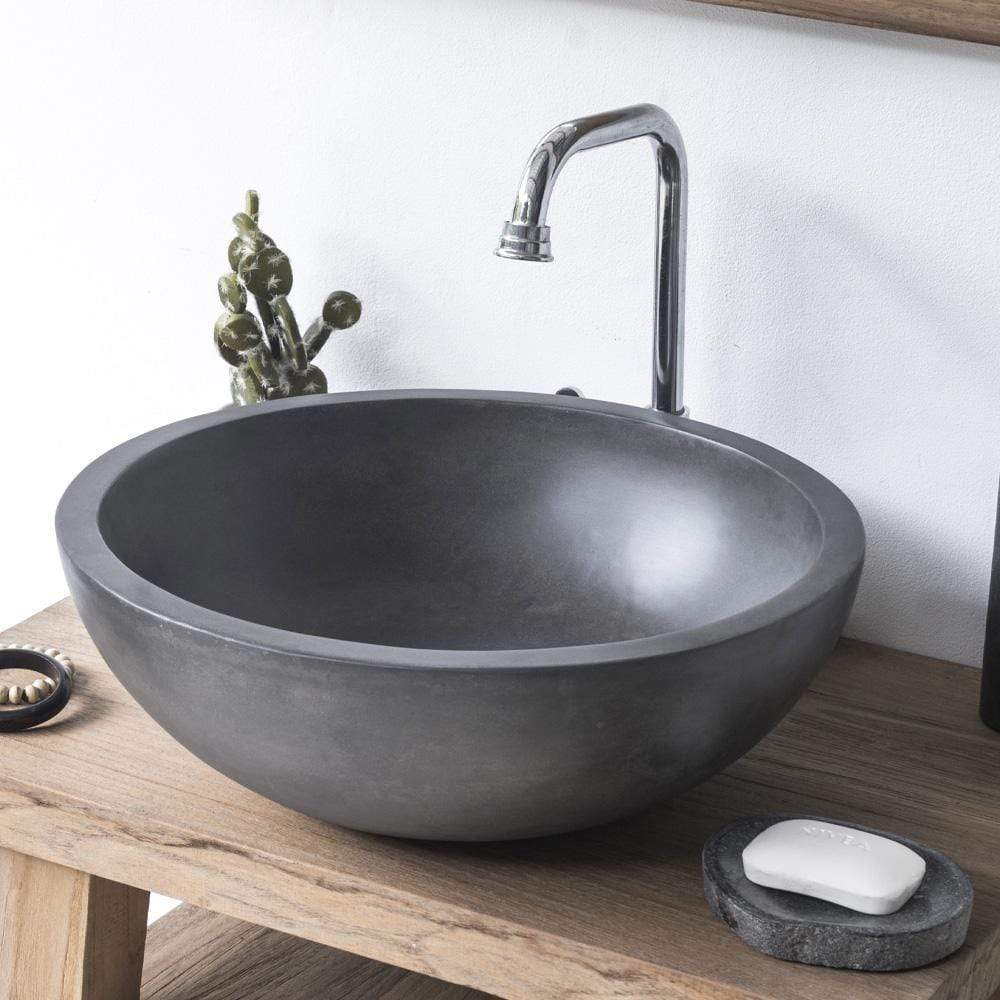
11. LẮP ĐẶT
Đây là phương pháp phổ biến nhất và được thấy trong nhà bếp – gắn trên cùng. Chuyên gia sẽ đặt và sửa chữa bồn rửa vào phần mặt bàn đã được chuẩn bị sẵn. Thích hợp cho mô hình thép không gỉ một mảnh chẳng hạn như cái này.
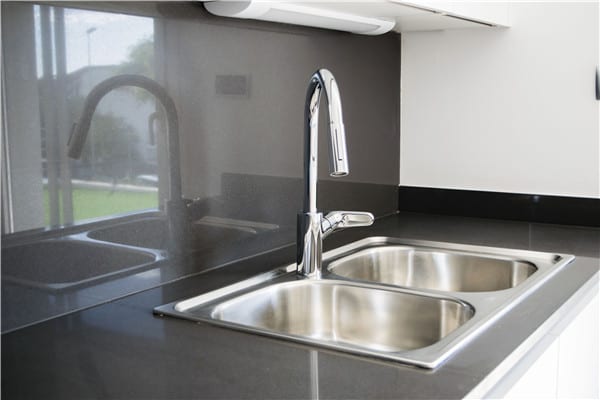
12.Bồn rửa dưới núi
Khi lắp đặt âm tường, bồn rửa được lắp không có bậc bên dưới mặt bàn làm việc. Kiểu lắp đặt này đặc biệt nâng cao mặt bàn làm việc, ví dụ: được làm bằng đá tự nhiên.
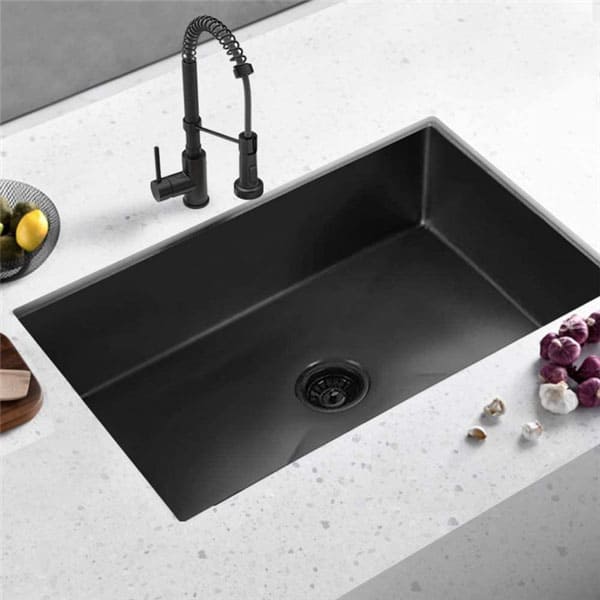
13. CHÌM MỘT MẢNH
Cuối cùng, các bộ phận bồn rửa được lắp ráp thành một bộ phận duy nhất, giúp tránh việc khoét lỗ trên mặt bàn. Các chuyên gia khuyên bạn nên để trống ít nhất 40 cm ở mỗi bên bồn rửa để làm việc thoải mái.
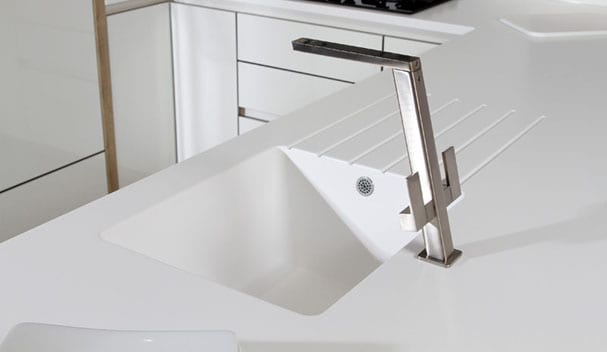
14.ĐẶT NÓ Ở ĐÂU TỐT NHẤT?
Thật vậy, nếu bạn có cửa sổ, hãy đặt khu vực mặt nước bên dưới để tận hưởng ánh sáng và tầm nhìn khi làm việc. Tất nhiên, cần phải lường trước phạm vi mở của nó để vòi của bồn rửa không bị cản trở. Trong không gian nhỏ, cửa sổ trượt có thể là giải pháp. Một lựa chọn khác cho những trường hợp này là vòi kéo xuống, có thể hạ xuống mức chìm khi không sử dụng.

15.ĐẢO CHÌM
Đặt bồn rửa ở nơi bạn có thể vẽ đường hành động cho khu vực cất giữ và nấu nướng. Hình tam giác tưởng tượng này càng cân đối thì nhà bếp càng có nhiều chức năng, đó là lý do tại sao ngày càng có nhiều người chọn đặt bồn rửa và khu vực chuẩn bị trên hòn đảo hoặc bán đảo trung tâm.
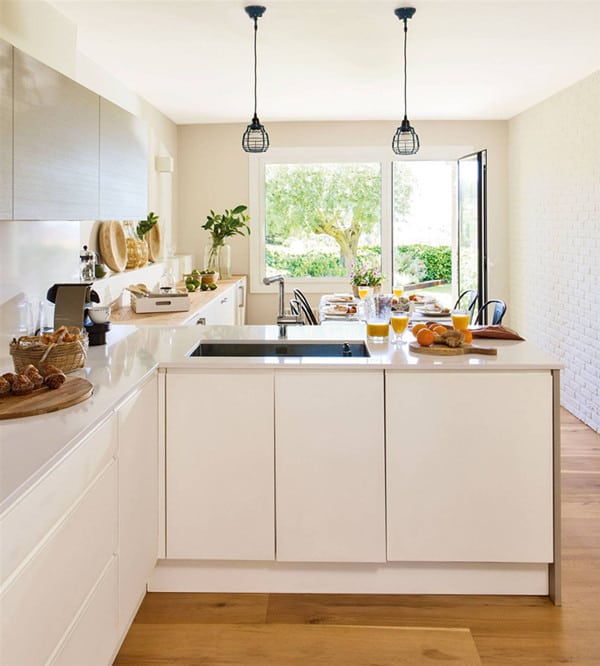
16. HAI VÙNG NƯỚC RIÊNG BIỆT
Nếu bạn có không gian trống, nó thực sự hữu ích. Một trong số chúng có thể được sử dụng để rửa chén, còn chiếc còn lại có thể đóng vai trò hỗ trợ trong khu vực chuẩn bị thức ăn. Cái sau thường được bố trí ở vị trí trung tâm để rút ngắn chuyển vị. Nếu có nhiều hơn một người trong số các bạn chuẩn bị bữa trưa hoặc bữa tối, bạn sẽ đánh giá cao điều đó.
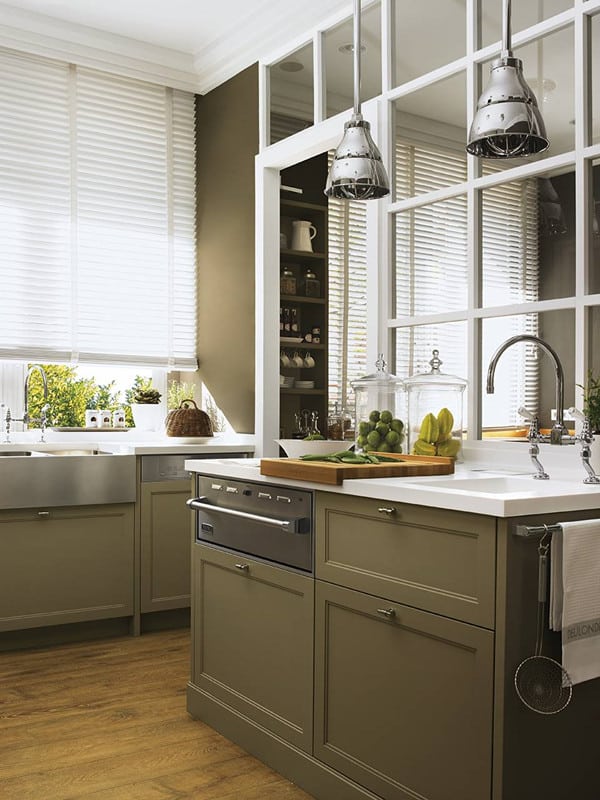
17.PHỤ KIỆN HỮU ÍCH
Bát và ống thoát nước thích ứng với chiều rộng của bát, thớt gỗ, hộp đựng xà phòng rửa chén tích hợp. Bạn sẽ bổ sung điều đó để làm cho bồn rửa của bạn trở thành một khu vực làm việc hoạt động 100%.
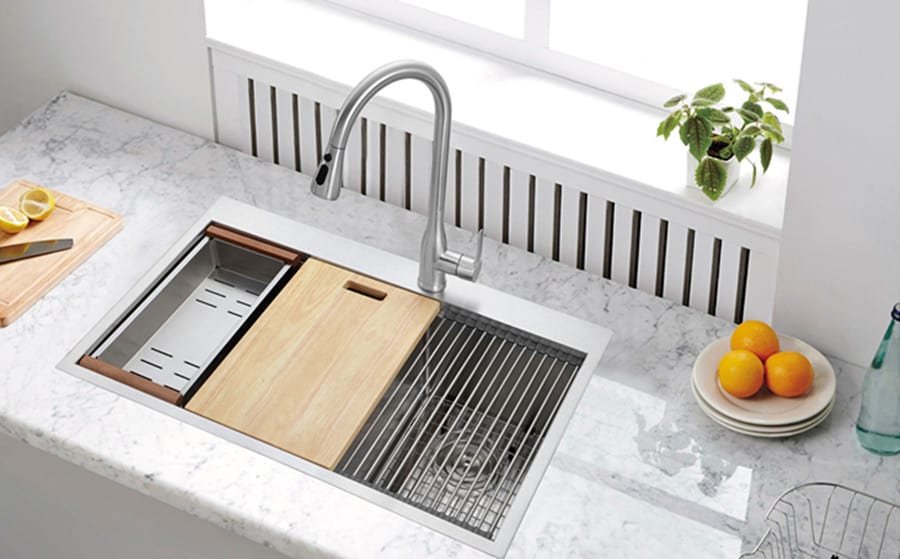
18.CHỌN VÒI ĐÚNG
Lựa chọn vòi sẽ phụ thuộc vào kích thước của bồn rửa và mục đích sử dụng nó. Ví dụ, đối với bồn rửa nhỏ, tốt nhất nên chọn vòi có vòi thấp để tránh nước bắn tung tóe. Các mẫu cần gạt đơn, có thể vận hành bằng một ngón tay và tốt nhất là bằng vòi kéo ra, là loại linh hoạt nhất.
Bồn rửa là trái tim của nhà bếp. Trong những năm qua, nó đã trải qua những thay đổi đáng kể để thích ứng với nhu cầu công việc hàng ngày và các bản phân phối khác nhau. Vì lý do này, như bạn đã có thể thấy, sự đa dạng về hình dạng và độ hoàn thiện rất đa dạng. Khu vực bồn rửa ngày càng được trang bị ngày càng nhiều đồ dùng hướng đến sự tiện dụng và thoải mái. Với một hoặc hai chiếc bát, hình tròn hoặc hình vuông, có hoặc không có phụ kiện - có rất nhiều lựa chọn.

VẬT LIỆU VÀ MÀU SẮC CHO MỌI HƯƠNG VỊ
Việc lựa chọn vật liệu cho bồn rửa rất phổ biến. Ví dụ, thép không gỉ cổ điển và vượt thời gian có thể được tích hợp vào bất kỳ môi trường nhà bếp nào mà hầu như không có vật liệu nào khác có được. Nhìn chung, thép không gỉ hợp vệ sinh, cứng và thuyết phục với độ bóng cao. Hạn chế duy nhất của nó là các vết cặn vôi xuất hiện trên bề mặt. Ngoài ra, việc bảo quản khó khăn hơn và cần được giặt thường xuyên bằng một sản phẩm cụ thể. Ưu điểm là có nhiều mẫu mã phù hợp với mọi sở thích với nhiều kích cỡ và sự kết hợp khác nhau.









